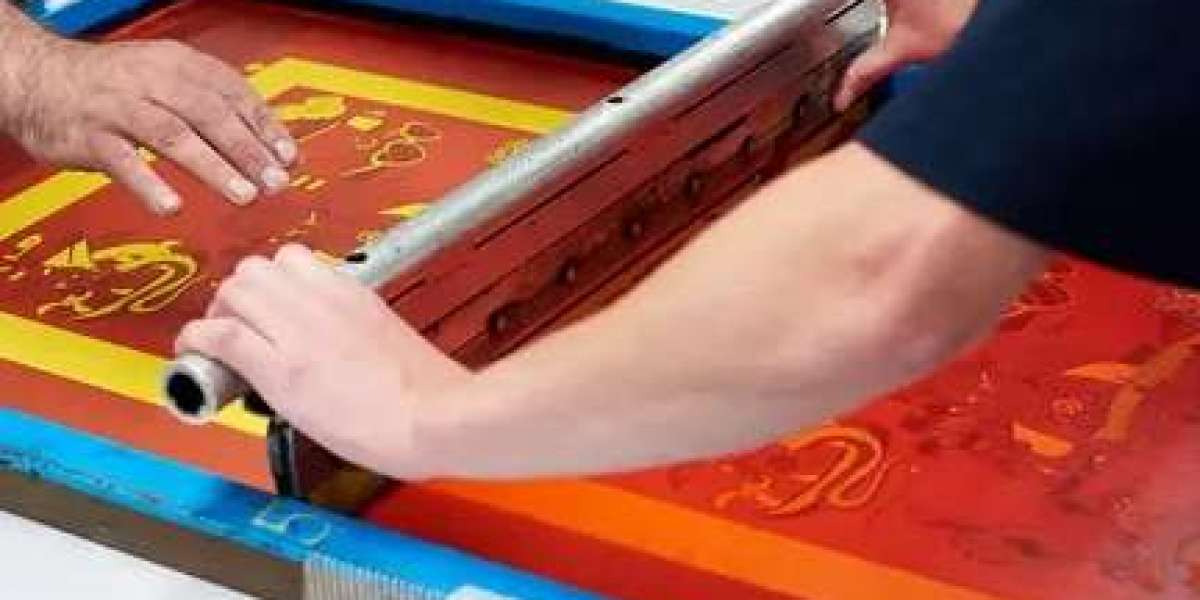What is Screen Printing?
Screen printing and embroidery, also known as silk screening, is a technique where ink is pressed through a stencil (or screen) onto the fabric. This process involves creating a screen with a design, then applying ink in layers, one color at a time, to transfer the design onto the surface of the material.
How It Works
The screen printing process begins with a stencil, where areas not part of the design are blocked off. A squeegee is used to push the ink through the open spaces of the stencil and onto the fabric. Once the design is printed, the fabric is set to dry, typically using a heat press, to ensure the ink adheres properly.
Benefits of Screen Printing
- Vibrant Colors: Screen printing allows for bold, vibrant colors that last longer on garments.
- Cost-Effective for Bulk Orders: The setup process can be time-consuming, but it becomes more cost-effective as the quantity increases, making it ideal for large orders.
- Durability: The ink used in screen printing is thick, which helps the design last for years, even after multiple washes.
Best Uses
Screen printing is great for large-scale printing jobs, especially when printing on cotton or polyester. It’s commonly used for t-shirts, hoodies, tote bags, and other promotional items.
What is Embroidery?
Embroidery involves stitching thread into the fabric to create a design. It's a more traditional method that adds texture and dimension to the garment. Unlike screen printing, which lays ink on top of the fabric, embroidery creates a raised design that’s woven into the material.
How It Works
Embroidery uses specialized machines to stitch the design directly onto the fabric. The design is digitized into a format that the embroidery machine can read, and each stitch is calculated and executed by the machine. Different colored threads can be used to bring a design to life.
Benefits of Embroidery
- Professional Look: Embroidery gives a polished, high-quality appearance that is ideal for corporate branding or professional uniforms.
- Long-Lasting: Embroidery is incredibly durable, resisting fading and wear over time, even when washed frequently.
- Textured Design: The raised texture of embroidery adds a tactile element that screen printing lacks.
Best Uses
Embroidery is perfect for corporate logos, uniforms, and items like polo shirts, caps, and jackets. It works well with thicker fabrics and items that need to maintain a professional appearance over time.
Screen Printing vs. Embroidery: Which is Right for You?
When deciding between towel embroidery near me, consider the type of material you are working with, the design complexity, and your budget.
- Material: Screen printing works best on cotton or polyester, while embroidery is better suited for thicker fabrics like fleece or canvas.
- Design Complexity: If your design involves a lot of fine detail or multiple colors, screen printing may be the better option. Embroidery, on the other hand, is ideal for simpler logos or text-based designs.
- Budget: For large orders, screen printing is typically more cost-effective, while embroidery may cost more but offers a premium look and feel, especially for smaller runs.
Conclusion
Both screen printing and embroidery offer unique benefits, and the right choice depends on the specific requirements of your project. Screen printing is ideal for vibrant, detailed designs on soft fabrics and is more affordable for bulk orders. Meanwhile, embroidery provides a high-end, durable finish that’s perfect for corporate branding and professional apparel. By understanding the strengths of each technique, you can make an informed decision that best suits your needs.






